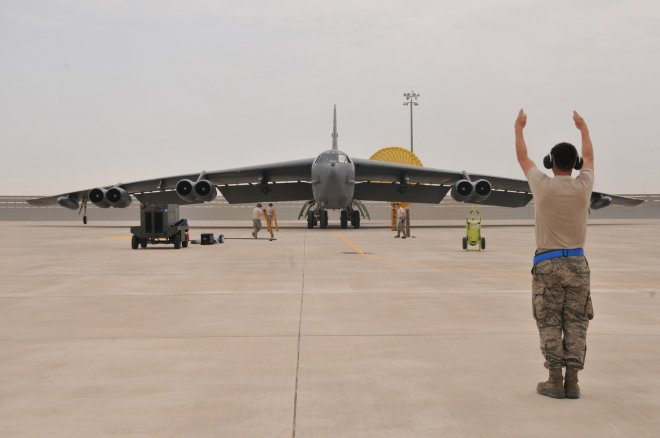
Plans to station nuclear capable B-52 bombers in the far north of Australia show that the U.S. military is seeking more deterrence options against China as its military strength increases, defense experts said.
In August, the U.S. Department of Defense sought preliminary information from contractors about building a parking apron to accommodate six B-52 bombers at the Australian air force’s Tindal base southeast of Darwin, according to the U.S. government’s contracting site. Australian broadcaster ABC reported on Monday that it had seen detailed plans for the air base expansion.
For more than a decade, Australia and the United States have extended their defense alliance with what they call force posture initiatives that have involved deployments of U.S. marines in Darwin as well as joint air force exercises and military infrastructure investment in Australia.
“This deployment has been a long time coming,” said Brian Harding, a former Pentagon official who helped negotiate the initial Australia-U.S. force posture arrangements under President Barack Obama.
“The development of new infrastructure in northern Australia to support U.S. Air Force operations has long been seen as potentially far more strategically important than the rotations of U.S. Marines, but has flown below the radar,” he told BenarNews, an RFA-affiliated online news service.
China’s Foreign Ministry criticized the U.S.-Australian plans and said the two countries have an outdated Cold War zero-sum mentality.
“Such a move by the U.S. and Australia escalates regional tensions, gravely undermines regional peace and stability, and may trigger an arms race in the region,” Chinese Foreign Ministry spokesman Zhao Lijian said at a ministry press conference.
China’s military buildup, its expansive claims tothe South China Sea, a busy global shipping route, and its forays into Taiwan’s airspace have contributed to heightened tensions in East Asia for several years.
China’s annual military spending will reach U.S. $230 billion this year compared with $60 billion in 2008, according to the Center for Strategic and International Studies, which cites official Chinese government figures. U.S. military spending was nearly $770 billion in 2021, according to CSIS.
On Tuesday, the Pentagon said that infrastructure works at the Tindal air base would support the “rotational presence” of a range of U.S. military aircraft in Australia following commitments for enhanced cooperation made at ministerial talks in 2021.
U.S. military aircraft, including B-52s and other bombers, have visited Australia for years to participate in joint exercises, which would continue, a spokesman for the U.S. Department of Defense said in an email. Australia hosted four U.S. stealth bombers at its Amberley air force base in July.
The B-52 strategic bombers can carry both conventional and nuclear weapons. Since 1970, Australia has been a signatory to the Treaty on the Non Proliferation of Nuclear Weapons, which commits it not to acquire nuclear weapons and to support efforts at disarmament.
Paul Dibb, a former director of Australia’s Defence Intelligence Organization, said in a television interview that Australia’s prohibition of nuclear weapons would be unlikely to change unless there was a conflict or imminent threat of one.
“What this [B-52] presence does … is to show to China it can’t just keep pushing south and south through the straits and waterways of the South China Sea,” he said.
It would also be reassuring for U.S. allies South Korea and Japan, Dibb said.
Meanwhile, Taiwanese Defense Minister Chiu Kuo-cheng said Taiwan, which China regards as a breakaway province, had not asked for a B-52 deployment in Australia.
“We’ve been making efforts to defend ourselves. To improve our capabilities is our permanent goal. Of course we pay close attention to other countries’ activities and developments but we don’t take part in them,” he said.
Ashley Townshend, a security expert at the Carnegie Endowment for International Peace, said China’s military buildup had contributed to regional instability and eroded American primacy in the Pacific by threatening U.S. ports and airstrips in places such as Guam.
“China’s missile threat is so severe that [the] U.S. needs more, safer places to operate. Australia is one such place. Dispersal here is part of efforts to bolster deterrence by making bombers more survivable, effective,” he said on Twitter.
Australia sees a robust U.S. military presence as crucial to its own security and a boost to U.S.-Australian navy cooperation is likely to be next, Townshend said.
BenarNews is an RFA-affiliated news service. Staff at Radio Free Asia contributed to this report.
